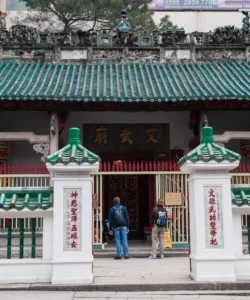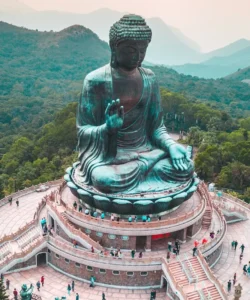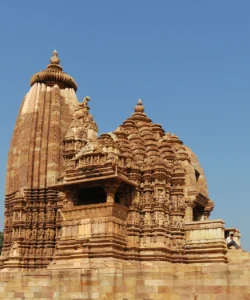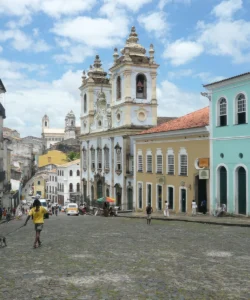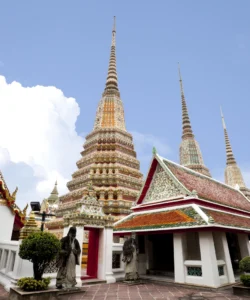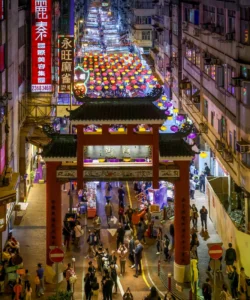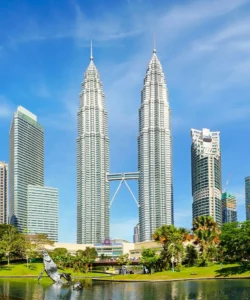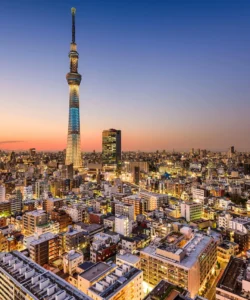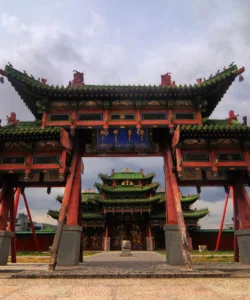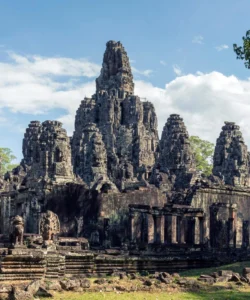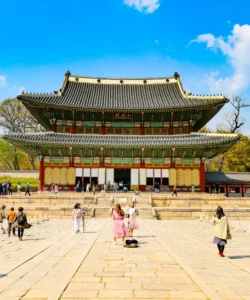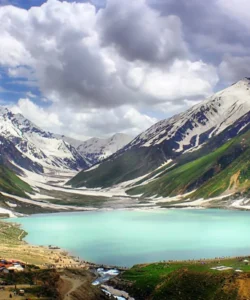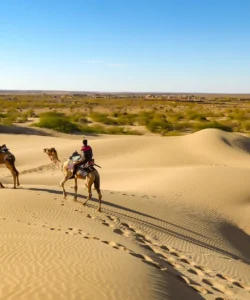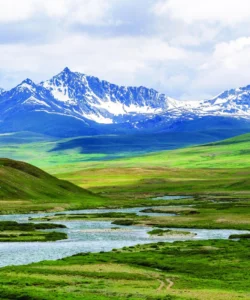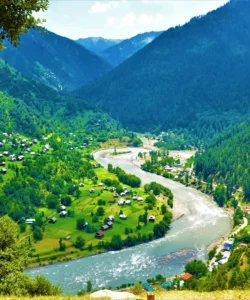Mohenjo-daro, meaning “Mound of the Dead Men” in Sindhi, is an archaeological site of profound significance located in the province of Sindh, Pakistan. Built around 2500 BCE, it was one of the largest and most sophisticated settlements of the ancient Indus Valley Civilization (also known as the Harappan Civilization) and stands as one of the world’s earliest major urban centers, contemporaneous with the civilizations of ancient Egypt and Mesopotamia.
Name: Mohenjo-daro (Sindhi: موئن جو دڙو; often spelled Moenjodaro)
Address: Larkana District, Sindh Province, Pakistan. It is situated on the right bank of the Indus River, approximately 28 km from Larkana city and about 510 km northeast of Karachi.
How to Get There:
Mohenjo-daro is an important archaeological site in Pakistan, and access requires reaching the province of Sindh.
- By Air: The most convenient way for international travelers is to fly into Jinnah International Airport (KHI) in Karachi. From Karachi, you can take a connecting domestic flight to Mohenjo-daro Airport (MJD), which is conveniently located within walking distance of the archaeological site itself.
- By Train: Mohenjo-daro has its own railway station on the Kotri-Habib Kot railway line, and many trains on this route stop there. However, train travel in Pakistan can be slow.
- By Road: Mohenjo-daro can be accessed via arterial roads branching off from the National Highway # N-55 (the Indus Highway), which runs between Karachi and Peshawar.
- From Karachi: The drive can take several hours (around 6-7 hours).
- From Larkana: The nearest major city, Larkana (about 30 km north), is well-connected by bus from other major cities in Sindh. From Larkana, taxis or rickshaws can be hired for Mohenjo-daro.
- Within the Site: The archaeological campus is relatively flat and best explored on foot, with well-defined walkways. A modern monumental gate serves as the main entrance.
- Accommodation: While basic, there are a couple of rest houses and motels near the site (e.g., Archaeology Resthouse, PTDC Motel) for overnight stays.
- Best Time to Visit: The cooler, dry months from October to March are ideal, as summers are extremely hot.
Landscape and Architecture:
Mohenjo-daro’s “architecture” is a remarkable display of meticulous urban planning, standardized brick construction, and sophisticated civic engineering, reflecting a highly organized and advanced society.
- Grid-Planned City: The city was laid out in a precise grid pattern, with wide main streets running north-south and narrower lanes intersecting them at right angles, dividing the city into rectangular blocks. This systematic layout is a hallmark of Indus Valley Civilization cities and reflects advanced urban planning.
- Baked Brick Construction: Most buildings in Mohenjo-daro were constructed using standardized kiln-baked bricks, a crucial innovation for durability and sanitation. The bricks were uniform in size (typically 4:2:1 ratio of length:width:thickness) and laid with mud mortar, a testament to high-quality craftsmanship.
- Two Main Sectors: Citadel and Lower City: The city was distinctly divided into two primary sectors:
- Citadel (Western Mound): Situated on a raised platform (approximately 12 meters / 39 feet high), this fortified area comprised massive public buildings and important structures, likely serving administrative, religious, or ceremonial functions. The later construction of a Buddhist stupa on these ruins in the 2nd century AD is a prominent feature today.
- Lower City (Eastern Area): This extensive residential area spread out along the banks of the Indus, featuring a grid of smaller streets and individual house lots.
- Advanced Drainage and Sanitation Systems: Mohenjo-daro is most famous for its exceptionally sophisticated drainage and sanitation systems, which were far more advanced than those of many contemporary civilizations.
- Covered Drains: Streets were equipped with covered drains made of bricks and mortar, carrying wastewater away from buildings into larger sewers. These had manholes for inspection and cleaning.
- Private Bathrooms and Wells: Most large houses had private wells, interior bathrooms (often with a tiled floor for bathing), and toilets (possibly flushable with water from adjacent bathing areas). Wastewater from these areas directly connected to the covered street drains.
- Waste Disposal: Evidence suggests the use of communal waste containers and systematic waste disposal.
- The Great Bath: One of the most iconic structures in the Citadel area is the Great Bath, a watertight rectangular pool (approximately 11.8 meters long, 7 meters wide, and 2.4 meters deep). It was lined with precisely cut baked bricks and waterproofed with bitumen, making it one of the earliest examples of waterproofing in the world. It had steps leading down to the water at both ends and surrounding changing rooms, suggesting its use for ritual bathing or public ceremonies.
- Great Granary: Near the Great Bath, the remains of a massive granary (about 45 x 45 meters) were found, with a solid brick foundation and ventilation shafts. It indicates a centralized system for food storage and distribution.
- Residential Architecture: Houses varied in size but were generally substantial, often multi-roomed, and typically two-storied with central courtyards for light and air circulation. They were designed for privacy, with few windows facing the main streets.
- Lack of Monumental Palaces or Temples: Interestingly, unlike many other ancient civilizations (e.g., Egypt with its pyramids, Mesopotamia with its ziggurats), Mohenjo-daro shows no evidence of extravagant palaces, grand temples, or monumental tombs dedicated to rulers or deities. This suggests a society that may have been more egalitarian, with a focus on public utilities and communal living rather than ostentatious displays of individual power.
What Makes It Famous:
- UNESCO World Heritage Site: Designated a UNESCO World Heritage Site in 1980, Mohenjo-daro is recognized as the best-preserved urban settlement of the Indus Valley Civilization, providing exceptional testimony to a remarkable early civilization.
- Advanced Urban Planning: It is globally renowned for its sophisticated and highly organized urban planning, featuring a precise grid layout, standardized brick architecture, and distinct residential and public areas.
- Revolutionary Sanitation System: Mohenjo-daro’s advanced and elaborate drainage and sewage systems were far ahead of their time, surpassing those of many contemporary civilizations like Egypt and Mesopotamia, demonstrating a remarkable understanding of public health and hygiene.
- The Great Bath: This iconic structure is famous as one of the earliest examples of monumental public baths, suggesting important ritualistic or communal functions.
- Archaeological Discoveries: Excavations have yielded significant artifacts, including:
- “Dancing Girl” statue: A famous bronze figurine, symbolizing the city’s artistry.
- “Priest-King” bust: A steatite sculpture of a bearded man, believed to be a priest or ruler.
- Pashupati seal: Depicting a figure in yogic posture surrounded by animals, interpreted as an early form of Shiva.
- Numerous other seals, pottery, weights, and intricate bead jewelry, indicating extensive trade and advanced craftsmanship.
- Mystery of its Decline: Like the entire Indus Valley Civilization, the sudden abandonment and eventual decline of Mohenjo-daro around 1900-1700 BCE remains one of the greatest archaeological puzzles, adding to its allure.
Differences from Some Other Wonders:
- Early Urban Planning and Sanitation: While ancient cities existed elsewhere (e.g., Angkor Thom, older than some European cities but later than Mohenjo-daro), Mohenjo-daro’s distinction lies in its extremely early (c. 2500 BCE) and unparalleled sophistication in urban planning and sanitation systems. Its grid layout and covered drains were revolutionary for their time.
- Lack of Palaces/Temples: Unlike most other ancient civilizations (Mesopotamia, Egypt, later Indian empires) which built grand palaces, monumental tombs, or massive temples (like the pyramids or ziggurats) as central features, Mohenjo-daro’s absence of such grand displays of monarchical or religious power is unique. Its focus appears to have been on civic utility and egalitarian communal living.
- Baked Brick Dominance: While other ancient civilizations used stone or mud-brick, Mohenjo-daro’s extensive and standardized use of kiln-baked bricks for almost all its construction (including houses and drains) was a distinguishing architectural practice, contributing to its durability and sanitation.
- Undeciphered Script: The Harappan script found on seals from Mohenjo-daro remains undeciphered, adding a layer of enduring mystery and limiting a full understanding of its culture, unlike civilizations with deciphered written records.
- Focus on Daily Life: Its artifacts and city design give a strong impression of a society focused on organized daily civic life, trade, and public health, rather than warfare, grand religious ceremonies, or ruler worship as prominently seen in other ancient civilizations.
- “Lost” Civilization: Unlike civilizations that transitioned or were continuously documented, the Indus Valley Civilization, including Mohenjo-daro, was “lost” for millennia, buried under silt, until its rediscovery in the 1920s, lending it a unique mystique of a forgotten, highly advanced society.
Mohenjo-daro Photos:


























